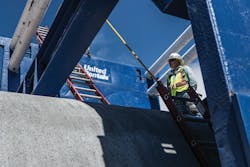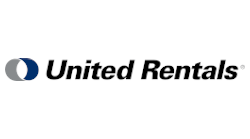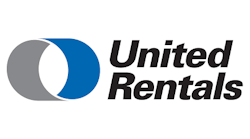Contractors can often develop their own shoring designs for trench excavations. However, excavations near adjacent structures, underground utilities, and roadways may come with unique and complex challenges that require professional input. Although contractors can usually utilize manufactured systems with tabulated data, there are times where additional guidance and stamped drawings from a professional engineer (PE) are necessary.
Any excavation over 20 feet deep automatically requires the use of a PE. A PE is also necessary when there are heavy surcharges—such as heavy equipment, stockpiled equipment, roads, bridges, and buildings—close to the excavation. PEs look at all the conditions for the site and develop a shoring or sloping design that will work for that specific location. Working with an experienced engineering team can speed up the process considerably.
Contractors may be reluctant to turn to a PE because they fear the PE will develop a shoring design that requires more expensive, non-standard equipment. But many site-specific designed shoring systems use off-the-shelf equipment.
Shoring Designs
OSHA’s excavation standard (29 CFR Part 1926, Subpart P) gives contractors four options when it comes to setting up a shoring system for an excavation that is 20 feet or less. Only option 4 involves a custom-engineered solution, which is typically required when there are additional surcharges to consider.
Option 1 (Section 1926.652 (c)(1)) is for smaller-scale excavations. It covers lighter-weight timber and aluminum shoring and requires following the OSHA guidelines laid out in Appendices A and C of the excavation standards. This option is not valid if there are surcharges close to the excavation.
Option 2 (Section 1926.652 (c)(2)) allows contractors to follow manufacturers’ tabulated data for shoring equipment. This is engineering documentation that shows that the manufacturer’s engineer has evaluated equipment and has said that it will work at a certain depth, with a certain kind of soil, and under certain site conditions. Like option 1, option 2 is not valid if there are surcharges close to the excavation.
Most shoring system manufacturers include the following explanation of surcharges in their data tables: “Maximum depth ratings presented in tabular form are not considered adequate when loads imposed by structures or by stored material adjacent to the trench weigh more than the load imposed by three feet of soil surcharge. The term ‘adjacent’ as used here means the area within a horizontal distance from the edge of the trench equal to the depth of the trench.”
Option 3 (Section 1926.652 (c)(3)) allows contractors to use tabulated data from independent professional engineers who aren’t associated with the manufacturer but who have developed this data on their own. One example would be if a contractor wants to close off the end of a trench shield with steel plates. Since this field application does not pertain directly to the manufactured product, a Professional Engineer in private practice might perform the engineering analysis to address this condition and make it publicly available because the situation comes up so frequently.
Option 4 (Section 1926.652 (c)(4)) requires a site-specific design developed by a registered Professional Engineer in the state where the work is taking place. This is necessary when the parameters of the trench don’t fall within either the appendices or the tabulated data. If you have to go deeper than the data says or if you have extra surcharge loads nearby that aren’t included in the data, then it is necessary to go the site-specific engineering route.
Sloping Designs
OSHA provides four similar options for sloping and benching systems. Contractors can follow the sloping and benching guidelines provided in the OSHA standards for excavations up to 20 feet deep. Anything over that, they have to have site-specific designs.
Option 1 (1926.652(b)(1)) spells out the allowable angle for the slope using either a general formula or Appendix B of the standards.
Option 2 (1926.652(b)(2)) refers contractors to Appendices A and B for the maximum allowable slopes and allowable configurations for sloping and benching systems.
Option 3 (1926.652(b)(3)) allows contractors to use tabulated data on slopes and benching that has been compiled by a professional engineer.
Option 4 (1926.652(b)(4)) requires a professional engineer to design the sloping and/or benching system if the trench parameters aren’t covered in appendices or tabulated data.
The PE’s Role
PEs look at all of the conditions for the site and come up with a shoring or sloping design that will work for that specific location. Working with an experienced engineering team can speed the process.
For instance, at United Rentals our company produced over 2,500 shoring design plans last year, and this year we’re expecting to generate about 3,000 plans. The more you do something, the more familiar you are with it.
As engineers, PEs can come up with a solution for just about anything because we have lots of tools in the shed. But most of the time, it’s just what the contractor prefers, and how they want to approach it. Since they are the ones installing it, we like to rely on their experience and preferences.
In addition to providing custom shoring and sloping design plans, engineering consultants can perform a variety of other design services. These include utility support design plans, traffic deck design plans, traffic control design plans, pipe plug blocking plans, sewer bypass design plans, and dewatering design plans.
Inspecting Equipment
Once a trench protection system has been selected and installed, contractors want to be confident that the shoring and shielding equipment they have implemented to protect their workers is doing its job. This is where inspections come in.
OSHA mandates every job site to have a competent person who has been trained to inspect trenches and identify existing and predictable hazards or dangerous working conditions in the surrounding area. The competent person is responsible for overseeing all aspects of the excavation, including the inspection of the shoring and shielding equipment.
This entails a daily check at a minimum. It is also necessary to do an inspection every time there is a change in conditions. The change could be a rainstorm, for instance, that can directly affect the stability of the soil. It is essential for the competent person to continually monitor job site conditions and reclassify the soil if necessary.
Safety Training
Maintaining up-to-date training on safety regulations and equipment solutions is vital to keeping construction workers safe. A more educated workforce is a safer and more productive workforce. Contractors face daily challenges to this goal, and lectures with minimal classroom engagement do not suffice as training.
Training organizations with dedicated resources can offer quality safety instruction, together with assistance outside the classroom—including job site consultation, engineered designs, and safety equipment. Training in excavation safety for competent persons, confined space entry, fall protection, site-specific regulatory compliance, and operator certifications are risk management levers that can also improve productivity.
Solve Gaps with Experts
As contractors work to set in place the right trench protection system for a job site, it is important to keep in mind how third-party resources can address areas that are beyond their typical scope of performance or experience. These resources can help companies fill gaps in a range of areas including specialized equipment, classroom training, pre-bid analysis on protective system solutions, onsite consultation, and engineering designs that can be applied successfully on a project.
The ultimate trench protection goals for organizations are ensuring safety and productivity. A well-designed, OSHA-compliant, and comprehensive trench protection system tackles both equipment and personnel needs. With these requirements addressed, contractors can not only provide safe job sites but also enable personnel to be productive in delivering quality work on time and within budget.
This article discusses common industry processes and is not intended to be a substitute for site-specific professional/expert advice, instruction, and supervision. United Rentals recommends consulting with Shoring and Excavation Experts to ensure full compliance of Federal OSHA 29 CFR, Part 1926, Subpart P-Excavations and Trenches.







